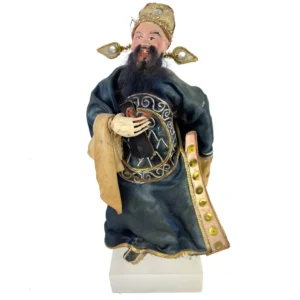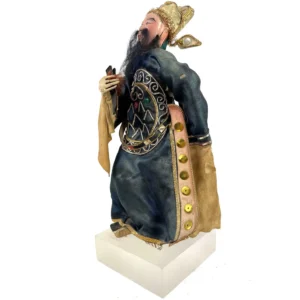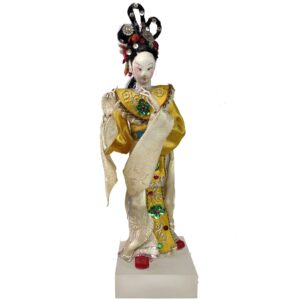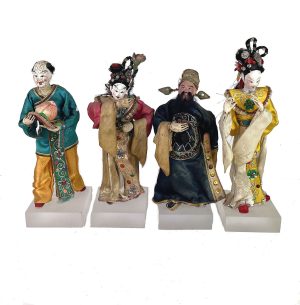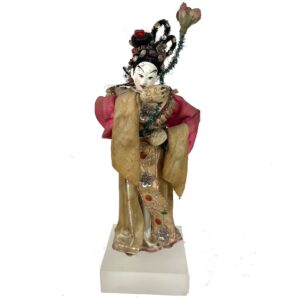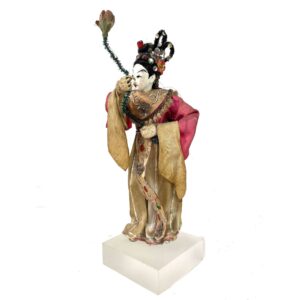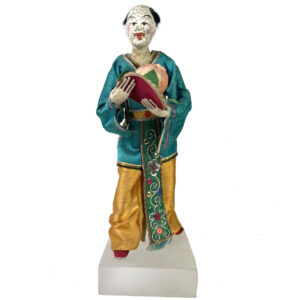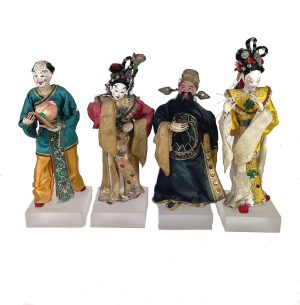-
Sale!


$195.00 Original price was: $195.00.$135.00Current price is: $135.00.
Ht: 8.75″ D: 4″ D: 3.125″ | FREE SHIPPING within Continental U.S.
Colorful bearded official/entertainer doll with traditional hat, dark blue and gold robe holding paper clappers castanets. Mounted on lucite.
-
Sale!


$195.00 Original price was: $195.00.$135.00Current price is: $135.00.
H: 10.5 ” W: 3.5 ” D: 3.125″ | FREE SHIPPING WITHIN CONTINENTAL U.S.
Charming Chinese Nuo Opera dancer wearing a costume with 5-petal plum blossoms symbolizing a wish for the Five Happinesses: prosperity, long life, health, a virtuous life and natural death.
-
Sale!


$195.00 Original price was: $195.00.$135.00Current price is: $135.00.
H: 8.75 ” W: 4 ” D:3.125 ” | FREE SHIPPING WITHIN CONTINENTAL U.S.
Chinese opera dancer doll with elaborate headdress and 5-petal plum blossom on sash symbolizing the Five Happinesses: prosperity, long life, health, living a virtuous life and dying a natural death.
-
Sale!


$195.00 Original price was: $195.00.$135.00Current price is: $135.00.
H: 9.25″ W: 3.125″ D: 3″ | Free SHipping within continental u.s.
Vivacious attendant doll offering huge peach in vibrant Chinese dance costume in red, yellow, green-blue with sequins, silver and gold thread and plum blossoms as wish for Five Happinesses. On Lucite stand, part of set of 4 .
End of content
End of content

